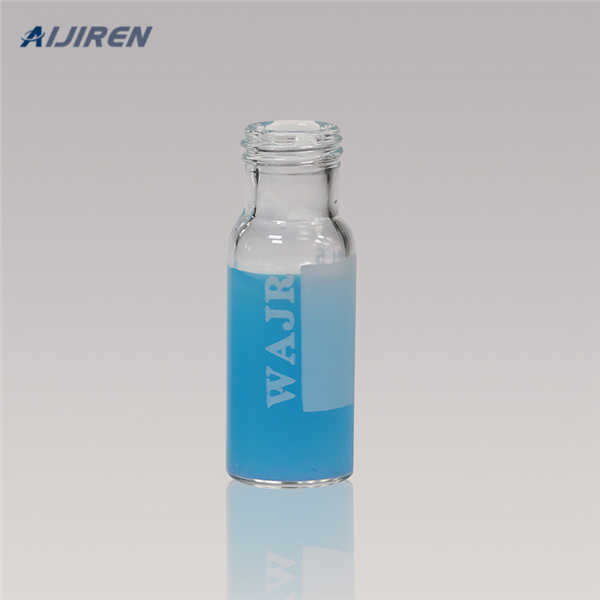
With a female luer lock inlet and male slip outlet, the syringe filter easily fits onto the end of the disposable syringe containing the sample, as shown in Figure 1. The extract is gently pushed through the filter into a sample vial for injection, removing damaging particulates from the final extract.

Article on syringe filters; 30mm Cellulose Acetate Filter 0.22 µm 100pcs/Pack (Non-Sterile) $ 75.00 . 30mm Cellulose Acetate Filter 0.45 µm 100pcs/Pack ...

Cellulose Acetate Membrane Filters / Type 11107. The hydrophilic cellulose acetate membrane filters combine high flow rates, good chemical resistance (pH 4-8) and thermal stability with very low adsorption characteristics. They are excellently suited for use in pressure filtration devices. Added to Shopping Cart. Item no.: 11107--13------N.

Membrane filters, Grade NL, made from pure polyamide. Membrane filters, Grade OE, made from cellulose acetate. Membrane Filters, Grade RC, Regenerated cellulose. Membrane filters, Grade TE, PTFE with support. Membrane filters, gridded Type 13806. Membrane filters, gridded Type 13906 and 139H6.

Permanently hydrophobic filter material, very suitable for air and gas filtration. PTFE membranes are extremely resistant to aggressive solvents and acids and can be used to filter particulate from both liquid and gas samples. Resistant to solvents, acids and bases. 200 ° C. Autoclaving at 121 ° C or 134° C or with ethylene oxide.

Syringe filter MCE material: mixed cellulose is a mixture of cellulose acetate and nitrocellulose. It has no biological activity and good hydrophilicity. It is widely used in clarification and sterilization filtration of various liquids. One of the microporous filter membranes.

LLG Syringe Filter CA, Cellulose acetate. LLG Syringe Filter GF, Glass-fibre. LLG Syringe Filter NY, Nylon/Polyamide. LLG Syringe Filter PE, Polyethylene. LLG Syringe Filter PES, Polyethersulfone. LLG Syringe Filter PTFE, Polytetrafluorethylene. LLG Syringe Filter PVDF, Polyvinylidene fluoride.

Cellulose Acetate (CA) Cellulose Acetate (CA) is a very low binding Membrane for most Macromolecules and are especially recommended for applications requiring maximum Protein recovery. Very low Protein and DNA binding. Ideal for aqueous based biological Samples. Moderate Chemical Resistance.

Thermo Scientific™ Target2™ Cellulose Acetate Syringe Filters. Ensure cleaner sample extracts by removing interfering materials and fine particles prior to injection with these robust cellulose acetate (CA) syringe filters. $278.00 - $539.00.

Individual prices . Region preferences Syringe filter, color coded Syringe filter, labeled ... Syringe filter, sterile . Membrane type Cellulose acetate (CA ...

Nov 22, 2021 · The MarketWatch News Department was not involved in the creation of this content. Nov 22, 2021 (CDN Newswire via Comtex) -- Global Cellulose Acetate (CA) Syringe Filters Market Growth 2021-2027

Jun 09, 2021 · Global Sterile Filtration market size will grow at a significant CAGR during the forecasting period from 2020–2027. The primary factors are growing pharmaceutical & biopharmaceutical sectors and the rise in demand for safe, efficient, and better biologics.

Cellulose acetate (CA) membranes are made of entirely cellulose acetate polymer. These membrane filters have the lowest protein binding of the filer types in question and typically have the greatest throughput when used with proteinaceous solutions. They are also used in applications where maximum protein recovery is critical.

Syringe Filter, 13mm 0.22um Cellulose Acetate 100pk Red, luer lock. Syringe Filters Material: with Luer Lock Inlet • Luer lock inlet offers leak-tight syringe connection. • Variety of filter types, porosities, and diameters. • Color coded for easy identification. • Rugged polypropylene housing. • Autoclavable to 121 °C for 15 minutes.

The cellulose acetate membranes for treatment of leather effluent showed a permeate flux of 33-42.0 Lm-2 h-1 along with separation of suspended and dissolved solids, chlorides, sulphate, oil and grease, ammonical nitrogen, potassium and sodium by more than 80% (Jarvis and Wagener, 1995 Jarvis, N. V. and Wagener, J. M., Mechanistic studies of